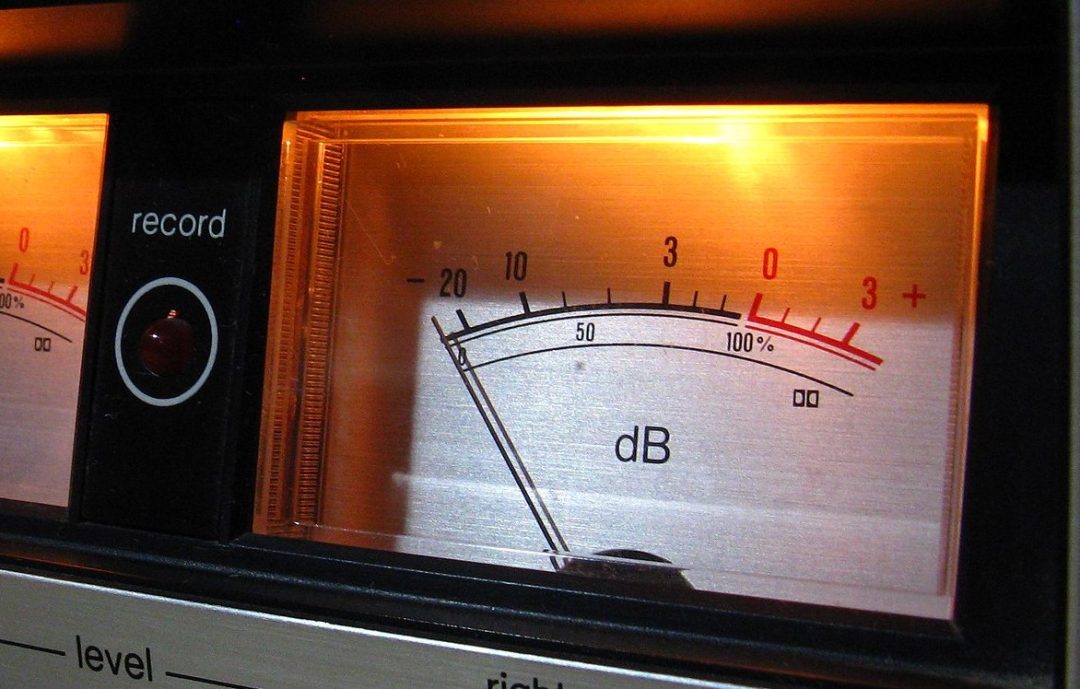What is RMS? What’s true peak? What the heck is LUFS? All of these are totally reasonable questions in the weird world of audio! There are lots of different ways we measure loudness, and it can be tough to pin down when and why to use certain kinds of metering versus others. In this article, we’ll aim to define a few keywords you’ll often see, like RMS, true peak, and LUFS. We’ll save the super technical specifics for another time, and stick to practical definitions and applications.
What Is Peak Level?
A peak level is an instantaneous measurement. It tells us what we call a “point in time” reading; how loud is the mix, or the specific channel, right this second? The meters in our DAW represent dBFS by default (decibels relative to full scale), and we understand that the maximum ceiling in digital audio is 0 dBFS. Beyond that, we could start running into distortion and clipping.
Peak levels bounce around second to second in a dynamic piece of music. One thing to keep in mind is that it’s okay if individual channels go into the red, or above 0 dB as long it sounds good. But if the master is hitting above 0, you have level issues to address in the mix.
How Is Peak Level Measured?
Well, the simplest explanation is that we use the meters in our DAW to measure peak levels. They respond very quickly, which is to say, they’re precise. Our DAW meters give us a super accurate reading of our levels moment to moment. And again, the default measurement is dBFS with a maximum ceiling of 0.
True Peak
Peak levels tell us how loud our mix is in the digital realm. True peak metering, on the other hand, considers the D/A conversion process, where the analog reconstruction of a signal can actually peak above what our DAW is telling us. True peak readings can oftentimes be well above a regular peak reading; it’s a more accurate style of metering than plain ol’ peak levels because it shows us ultra precise measurements of inter-sample peaks in our audio.
With Lossless audio like WAV files, inter-sample peaks usually aren’t noticeable. But when you start converting audio to lossy formats like MP3s, there can be a noticeable degradation of quality.
- SEE ALSO: What Is a True Peak Limiter?
When to Use True Peak Metering
True peak metering is great for mastering since it shows us precisely how loud our audio gets once it leaves the DAW and hits a pair of speakers. Mastering engineers can use true peak metering to understand exactly just how loud the signal’s getting, and subsequently make choices to avoid clipping/distortion.
RMS (Root Mean Square)
Okay, so what is RMS then? RMS represents the average (also called “integrated”) loudness of a signal. It will typically take a measurement every 300ms, which means whatever peaks occur within that time frame get averaged out for the RMS reading. So RMS isn’t as precise as peak metering, but it actually gives us a better understanding of overall loudness based on the average strength of the signal.
- SEE ALSO: 5 Best FREE VU Meter Plugins
When to Use RMS
RMS is useful for whenever you want a reading closer to a person’s actual perception of loudness. Analog VU meters provide average readings, and you can even get VU meter plugins in your DAW.
LUFS (Loudness Units Referenced to Full Scale)
Finally, there’s LUFS. The new industry standard, LUFS, like RMS, also gives us an average reading. However, it’s actually an even more accurate representation of how the human ear perceives loudness. Without getting overly technical, LUFS basically runs audio through an EQ that closely mimics how humans hear specific frequencies. Then it spits out a reading.
There’s a bit of debate about what a “good” or standard LUFS reading is. With peak levels and dBFS it’s easy—don’t go above 0. As it currently stands, most folks will tell you somewhere around -14LUFS is the sweet spot for mixes that end up on streaming platforms.
When to Use LUFS
You should consider referencing an LUFS meter every mix. Just mixing to dBFS peak levels will ensure you don’t clip, but it won’t tell you the bigger story of perceived loudness. For example, you could mix every song to -3 dBFS, and chances are, every song will sound a little different. That’s because you’re only mixing based on peak levels and not the average level as human beings will actually perceive it.
- SEE ALSO: How to Use Youlean Loudness Meter (A Free Metering Plugin!)
- SEE ALSO: The Loudness Penalty by Streaming Services
